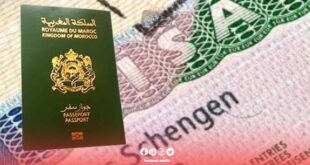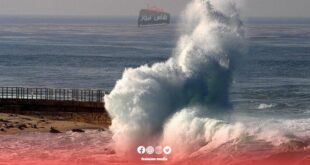The tunnel project linking Africa to Europe via Morocco and Spain is being followed very closely by many countries. The British tabloid The Sun devoted an article listing the advantages of this “massive underwater infrastructure.”
The giant transcontinental maritime connection project in Gibraltar is the subject of interest, not only in the two countries it will connect, namely Morocco and Spain. The British newspaper The Sun, in its electronic edition issued on April 29, focused on this “strategic project between Spain and Morocco, as well as for Europe and Africa.” While reviewing its advantages, especially with regard to communication and movement across continents, the newspaper could not help but wonder about the “feasibility” of this project.
Each has his own vision to announce the final form of this Pharaonic work that should unite the two continents. According to the latest data revealed by the Spanish information website Voz Populi, the Spanish government is working with the aim of completing, as quickly as possible, the form that this huge project should take, especially its exorbitant cost.
This daunting task was entrusted to the Spanish general engineering company Ineco. The latter should consider a new prototype project, relying on European funds, before mid-2026. The company must dust off the old version, proposed in 2007 by the Spanish companies Typsa and Moroccan Ingema, under the leadership of the Swiss company Lombardi and the Italian company Geodata, and update it on Technical level, but also financial level.
Ineco, which has several underground projects, such as the road network installed under the Madrid station, should present a new, and hopefully final, version of the project. “It involves Ineco identifying construction alternatives and their feasibility, as well as a corresponding safety study and estimating budget costs for all works, including those on the Moroccan side,” Spanish media reported.
The astronomical cost of the project should also be financed by European and African institutions. Therefore, the maritime connection is a candidate to be part of the rail corridor of the European transport network, according to several supportive Spanish sources. This is a big advantage because this connection allows the tunnel to benefit from an inexhaustible source of funding, namely public European funds allocated to infrastructure.
The project should also crystallize the Moroccan-Spanish rapprochement and seal forever the future of the two countries. Hence the Spanish government’s keenness to provide all available means for the construction site of the century.
The route currently being explored by Ineco involves a longer route than the original shorter section that could connect the two countries at a length of 14 kilometres. The problem in the end is related to the depth that the undersea tunnel will reach, which is approximately 1,000 metres. For this reason, other alternatives are being studied, with a double path, but with a depth of less than 300 metres.
Initially, the project plans to construct a single-tube tunnel, which could be expanded with a second parallel tunnel, allowing the movement of goods and passengers. In this context, the main mode of transport studied concerns rail transport around the tunnel, not road. In short, this is the version that seems to be closest to implementation at the moment!
From: Fez News website
 فاس نيوز ميديا جريدة الكترونية جهوية تعنى بشؤون و أخبار جهة فاس مكناس – متجددة على مدار الساعة
فاس نيوز ميديا جريدة الكترونية جهوية تعنى بشؤون و أخبار جهة فاس مكناس – متجددة على مدار الساعة













